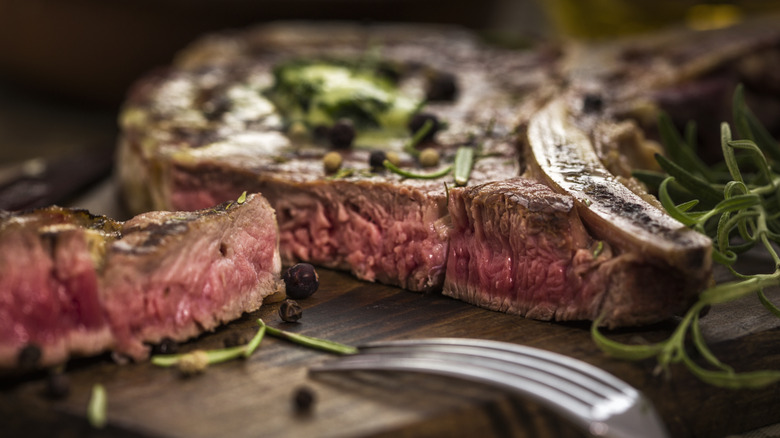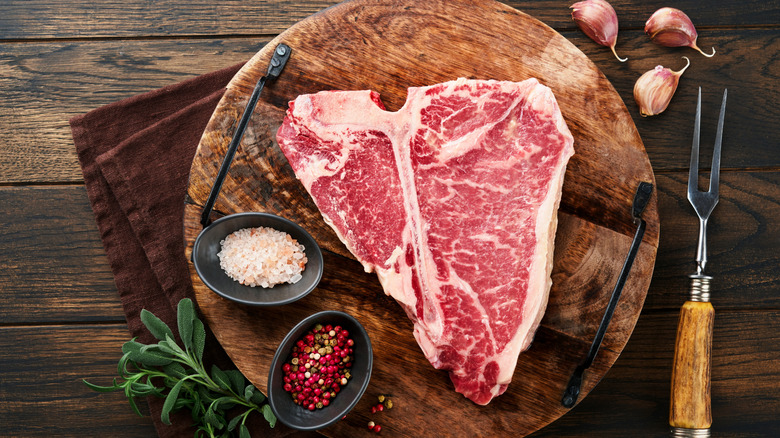What's The Difference Between T-Bone And Porterhouse Steaks?
Plenty of people have been there. While ordering a steak at a restaurant comes with recommendations from the chef and waiters to answer questions – seemingly imbuing guests with expert knowledge of filets, strips, and ribeyes — staring down the cold expanse of a grocery store aisle can make choosing the best cut of beef more difficult. And differentiating a porterhouse from a T-bone on sight can be particularly tricky.
Both a porterhouse and T-bone steak have a vague v-shape, like a flat-top Valentine heart. They're also of a similar rouge hue, like all uncooked red meat. But don't be fooled into thinking they're exactly the same. The main difference comes down to the size of the steak and how it's cut. The porterhouse is also typically a little more expensive (due, in part, to its larger size).
Beef prices vary partly because of the abundance or scarcity of a particular cut of meat. That's one of the reasons why chateaubriand, a dish that includes meat making up only a tiny percentage of a cow's composition, carries such a high price. On the other hand, the chuck prominent in most burger blends is in greater supply, thus much more affordable and readily available. The T-bone and porterhouse cuts also represent a lower percentage of the total cow. One whole bovine might net only about a half dozen T-bone steaks, and even fewer of the porterhouse variety. Like filet mignon, the steaks are both cut from the short loin. And while they have a lot in common, there's one significant differences.
When it comes to the T-bone vs. porterhouse, size matters
Although porterhouse and T-bone steaks share a section of the cow, they appear differently the chopping block. There, a butcher will identify the former's eponymous characteristic: the t-shaped bone that separates what would be the filet mignon on one side and a New York strip steak on the other. Kept together, you get the T-bone. This kind of supersteak configuration makes its actual moniker seem kind of quaint.
From the end of the short loin, a porterhouse also has a T-shaped bone. Even more confusingly, it even contains the T-bone's same beefy properties, filet and strip. But the porterhouse is even beefier, frequently appearing as a dish "for two" on restaurant menus.
The final ruling on what separates a T-bone from a porterhouse steak ultimately comes from the government. On a porterhouse, "The maximum width of the tenderloin must be at least 1.25 inches (3.2 cm) when measured parallel to the length of the back bone," the USDA decrees. The T-bone's max width is only half an inch. So go ahead and break out that ruler the next time you're chomping down in a chophouse within the 50 states, just to be totally sure that porterhouse isn't actually three T-bones in a trench coat.

